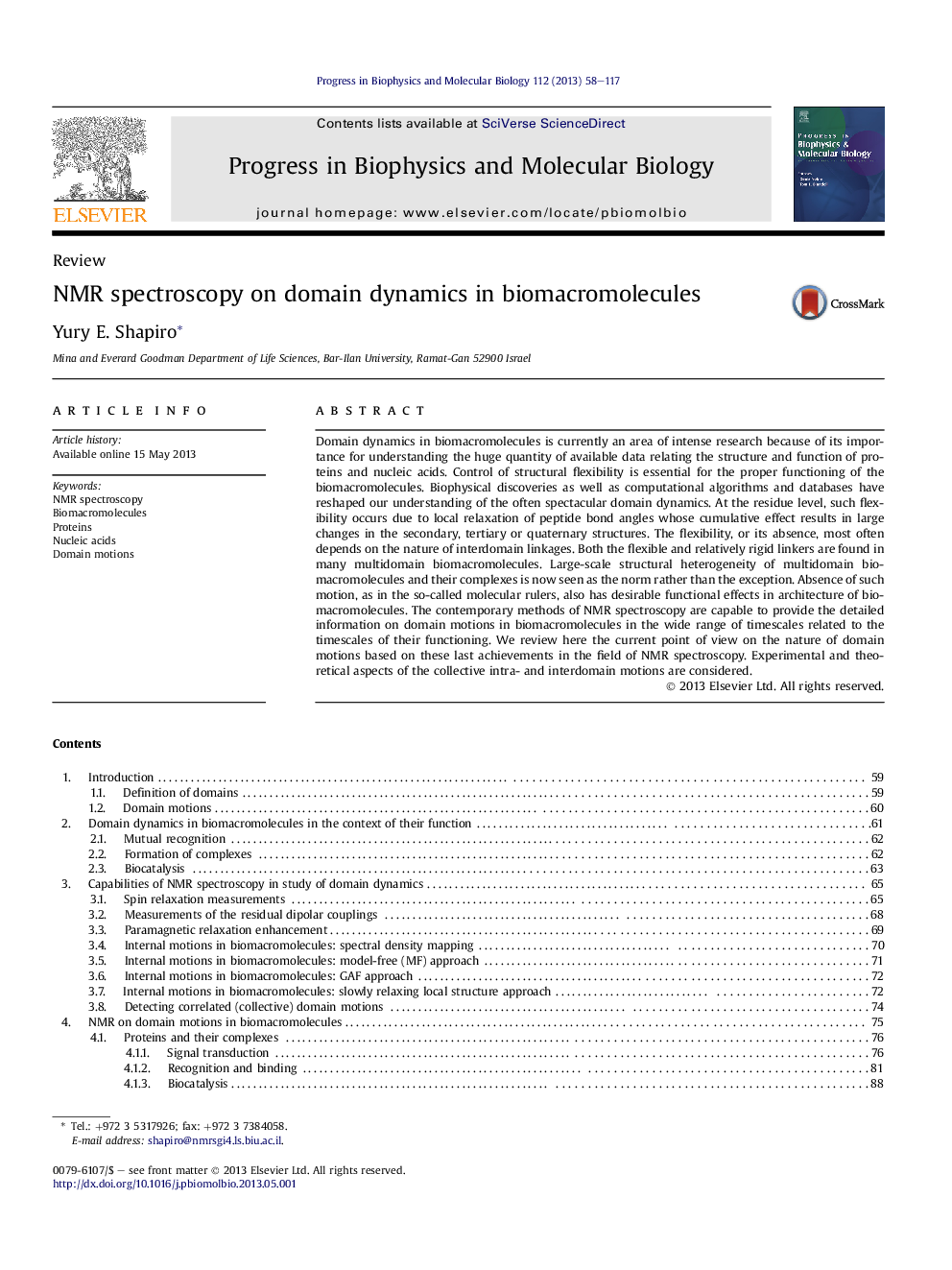| Article ID | Journal | Published Year | Pages | File Type |
|---|---|---|---|---|
| 2070124 | Progress in Biophysics and Molecular Biology | 2013 | 60 Pages |
Domain dynamics in biomacromolecules is currently an area of intense research because of its importance for understanding the huge quantity of available data relating the structure and function of proteins and nucleic acids. Control of structural flexibility is essential for the proper functioning of the biomacromolecules. Biophysical discoveries as well as computational algorithms and databases have reshaped our understanding of the often spectacular domain dynamics. At the residue level, such flexibility occurs due to local relaxation of peptide bond angles whose cumulative effect results in large changes in the secondary, tertiary or quaternary structures. The flexibility, or its absence, most often depends on the nature of interdomain linkages. Both the flexible and relatively rigid linkers are found in many multidomain biomacromolecules. Large-scale structural heterogeneity of multidomain biomacromolecules and their complexes is now seen as the norm rather than the exception. Absence of such motion, as in the so-called molecular rulers, also has desirable functional effects in architecture of biomacromolecules. The contemporary methods of NMR spectroscopy are capable to provide the detailed information on domain motions in biomacromolecules in the wide range of timescales related to the timescales of their functioning. We review here the current point of view on the nature of domain motions based on these last achievements in the field of NMR spectroscopy. Experimental and theoretical aspects of the collective intra- and interdomain motions are considered.
